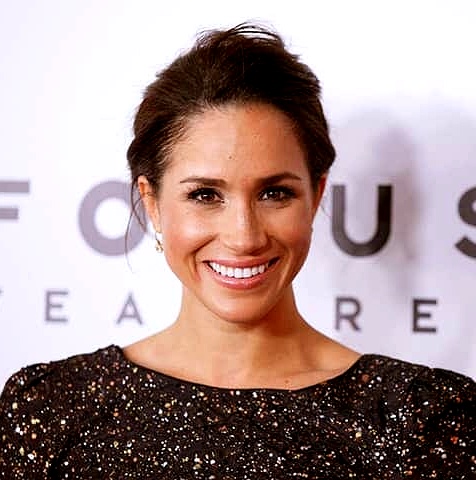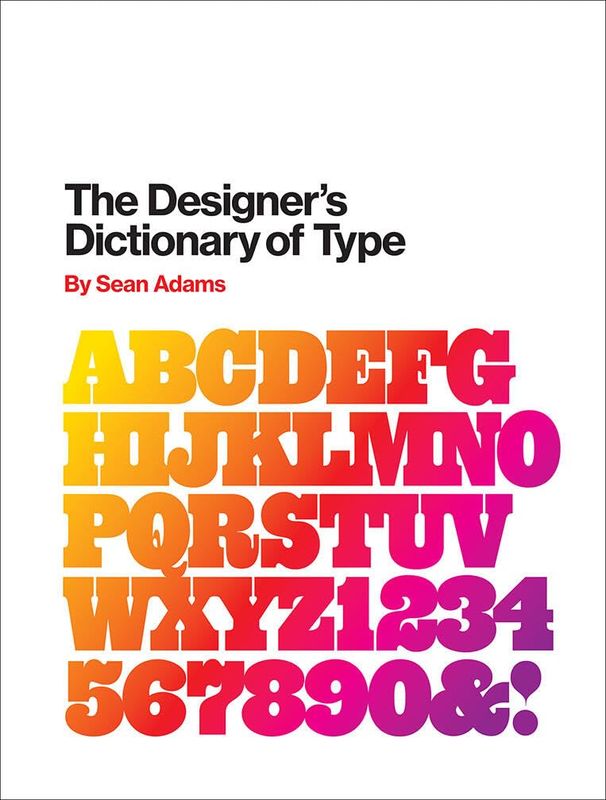How Buildings Learn Book Summary
In 'How Buildings Learn,' Stewart Brand explores the fascinating relationship between architecture and adaptability, revealing how structures evolve over time. He challenges the notion of buildings as static creations, illustrating how they respond to the needs of their occupants and the changing environment. Through striking examples and insightful analysis, Brand uncovers the inherent adaptability of great design. This thought-provoking journey invites readers to reevaluate their perceptions of architecture and reimagine the potential of our built surroundings. Discover how the passage of time can transform buildings into living entities.
By Stewart Brand
Published: 1995
""Buildings are not just static structures; they are living entities that evolve with time, use, and the whims of humanity.""
Book Review of How Buildings Learn
Buildings have often been studies whole in space, but never before have they been studied whole in time. How Buildings Learn is a masterful new synthesis that proposes that buildings adapt best when constantly refined and reshaped by their occupants, and that architects can mature from being artists of space to becoming artists of time. From the connected farmhouses of New England to I.M. Pei's Media Lab, from "satisficing" to "form follows funding," from the evolution of bungalows to the invention of Santa Fe Style, from Low Road military surplus buildings to a High Road English classic like Chatsworth—this is a far-ranging survey of unexplored essential territory. More than any other human artifacts, buildings improve with time—if they're allowed to. How Buildings Learn shows how to work with time rather than against it.
Book Overview of How Buildings Learn
About the Book Author
Stewart Brand
Stewart Brand is an influential American writer, best known for his work in the fields of technology, environment, and culture. Born on December 14, 1938, he gained prominence as the creator of the Whole Earth Catalog, a counterculture publication that epitomized the 1960s and 1970s. Brand's notable works include 'How Buildings Learn,' 'The Clock of the Long Now,' and 'Whole Earth Discipline,' where he explores themes of sustainability, design, and long-term thinking. His writing style is characterized by its blend of intellectual rigor and accessibility, often drawing connections between complex ideas and practical applications. Throughout his career, Brand has championed the importance of ecological awareness and innovative technologies.
Book Details
Key information about the book.
- Authors
- Stewart Brand
- Published
- October 1995
- Publisher
- Penguin Books
- ISBN
- 0140139966
- Language
- English
- Pages
- 248
- Genres
- Architectural DesignDesign ThinkingDesign
Purchase Options
Support local bookstores: BookShop gives a portion of each sale to independent bookshops!
Similar books you might like →
Better Web Typography for a Better Web Book Summary
In 'Better Web Typography for a Better Web,' Matej Latin unveils the transformative power of typography in web design. He delves into the principles of effective type, demonstrating how thoughtful choices can enhance user experience and engagement. The book is packed with practical tips and real-world examples to help designers craft visually stunning and readable websites. Latin's insights challenge conventional norms, urging readers to rethink their approach to typography. This essential guide equips both aspiring and seasoned designers with the tools to elevate their craft and create a more beautiful web.
The Designer's Dictionary of Type Book Summary
Delve into the fascinating world of typography with 'The Designer's Dictionary of Type' by Sean Adams. This comprehensive guide unravels the intricacies of typefaces, revealing their unique personalities and historical contexts. Each entry offers insights that inspire creativity and enhance design skills, making it an essential reference for both novice and seasoned designers. With stunning visual examples, the book encourages a deeper appreciation for the art and science of type. Discover how the right type can transform your work and captivate your audience!
The Timeless Way of Building Book Summary
In 'The Timeless Way of Building', Christopher Alexander unveils a revolutionary philosophy of architecture that champions the beauty and organic nature of spaces. He argues that true architecture should resonate with human emotions and the environment, creating a harmonious living experience. Through inspiring examples and a unique pattern language, Alexander illuminates the idea of crafting spaces that feel right. This book is not merely a manual for design but a deep exploration of what makes places and communities thrive. Readers will discover a compelling approach that challenges conventional construction norms and reveals the timeless principles of creating authentic environments.
The Design of Everyday Things Book Summary
In 'The Design of Everyday Things', Don Norman reveals the hidden principles behind effective design that shapes our everyday interactions. He explores the psychological underpinnings of how we perceive and interact with objects, highlighting the importance of usability and user-centered design. Through captivating examples, Norman illustrates how poor design can lead to frustration, while thoughtful design enhances our experience. This book challenges readers to rethink the functionality of everyday items, making them consider the design choices behind the objects they encounter. Ultimately, it invites us to demand better designs that cater to our needs, making the mundane extraordinary.
100 Things Every Designer Needs to Know about People Book Summary
In '100 Things Every Designer Needs to Know about People,' Susan Weinschenk unveils essential psychological principles that can enhance design effectiveness. With insights drawn from cognitive science, the book explores how people perceive, interact with, and make decisions about design. From the nuances of color perception to the importance of empathy in user experience, Weinschenk offers practical strategies for designers. Each principle is supported by fascinating research, making the content both informative and engaging. This enlightening guide equips designers to create more intuitive and user-friendly experiences, sparking curiosity about the intersection of psychology and design.
The Art of Game Design Book Summary
In 'The Art of Game Design,' Jesse Schell unravels the captivating world of game development, blending theory and practical insights. He presents a unique perspective that gaming is not just a skill but an art form, exploring what truly makes games immersive and memorable. With a combination of engaging anecdotes and hands-on exercises, Schell invites readers to think like designers and embrace creativity. The book serves as a comprehensive guide, making it an essential read for aspiring game creators and enthusiasts alike. Dive into the playful intricacies of design and discover the secrets that could inspire your next game masterpiece!
Sketching User Experiences: Getting the Design Right and the Right Design Book Summary
No summary available
Presentation Zen Book Summary
In 'Presentation Zen', Garr Reynolds revolutionizes the art of presentations by emphasizing simplicity, clarity, and visual storytelling. He challenges traditional PowerPoint norms by advocating for a design philosophy that captivates audiences and enhances understanding. Through compelling examples and practical techniques, Reynolds guides readers to craft impactful narratives that resonate and inspire. This book isn't just about slides; it's about communicating ideas effectively in a noise-filled world. Discover how to thrive in the realm of presentations and leave a lasting impression.
Showing 8 of 29 similar books
Similar Book Recommendations →

Meghan Markle's Book Recommendations
Meghan Markle, Duchess of Sussex, is an American actress, humanitarian, and author known for her role as Rachel Zane on the television series "Suits." After marrying Prince Harry in 2018, she became a prominent figure in the British royal family and an advocate for social justice and women's rights. In 2021, she published her first children's book, "The Bench," which explores the bond between fathers and sons through a mother's eyes. Markle's literary work reflects her commitment to storytelling and her passion for fostering empathy and understanding. Beyond literature, she co-founded the Archewell Foundation with Prince Harry to promote compassion and well-being globally.

Caterina Fake's Book Recommendations
Caterina Fake is an American entrepreneur and investor, best known for co-founding Flickr, one of the first photo-sharing platforms that helped define social media and web 2.0. After the success of Flickr, Fake went on to co-found Hunch, a recommendation engine that was later acquired by eBay. She is a partner at Yes VC, a venture capital firm that invests in early-stage startups, with a focus on companies that foster human connection and creativity. Fake is also an advocate for ethical technology and often speaks about the importance of designing products that prioritize user well-being. Her contributions to tech and her insights on the intersection of technology and culture have made her a respected leader in the industry.

Daniel Burka's Book Recommendations
Daniel Burka is a prominent figure in the tech and design world, best known for his significant contributions to digital product design. As a design partner at GV (formerly Google Ventures), he has played a crucial role in shaping the user experience of numerous successful startups. Burka co-founded the design agency MetaLab, which has worked with top-tier clients like Slack and Coinbase. Additionally, his work at Digg as the Director of Design helped pioneer social media design trends in the early 2000s. While not primarily an author, Burka's influence extends into literature through his insightful writings and talks on design and innovation.

Jason Fried's Book Recommendations
Jason Fried is an influential entrepreneur and author best known as the co-founder and CEO of Basecamp, a project management and team collaboration software company. He has notably co-authored several best-selling books, including "Rework" and "Remote: Office Not Required," which challenge conventional business practices and advocate for more efficient, flexible work environments. Fried's clear, straightforward writing style has resonated with a wide audience, making complex business concepts accessible. His work has significantly contributed to the discourse on modern work culture and productivity. Fried continues to influence contemporary business thought through his writing and leadership at Basecamp.

Sam Altman's Book Recommendations
Sam Altman is an American entrepreneur, programmer, and investor, best known as the former president of Y Combinator, a startup accelerator that has launched numerous successful companies, including Airbnb, Dropbox, and Reddit. Altman himself is a co-founder of OpenAI, an organization focused on ensuring that artificial intelligence benefits all of humanity. He has been a leading voice in the tech world, advocating for responsible innovation and the ethical use of AI. Under his leadership, Y Combinator grew into one of the most influential organizations in Silicon Valley, helping to fund and mentor early-stage startups. Altman’s blog and writings are widely read in the tech community, where he shares his insights on entrepreneurship, technology, and the future of AI. He has also been involved in several philanthropic ventures and continues to influence the tech world through his investments and thought leadership. His work at OpenAI has put him at the forefront of discussions about the future of artificial intelligence.

Julie Zhuo's Book Recommendations
Julie Zhuo is a product design expert and author, best known for her work as the Vice President of Product Design at Facebook, where she played a key role in shaping the platform's user experience. Zhuo is also the author of the best-selling book The Making of a Manager, which offers insights into leadership and team management, especially for first-time managers. She is passionate about helping people navigate the complexities of leadership and product development. Since leaving Facebook, Zhuo has continued to focus on writing, advising, and mentoring leaders in the tech industry. Her expertise in design and management has made her a respected voice in Silicon Valley.

Phil Libin's Book Recommendations
Phil Libin is a renowned entrepreneur and technology executive, best known for co-founding and serving as the CEO of Evernote, a highly influential note-taking application that has transformed productivity and personal organization. Under his leadership, Evernote grew to over 100 million users globally, establishing itself as a pioneer in the personal and professional productivity space. In addition to his work with Evernote, Libin co-founded All Turtles, an AI startup studio, and serves as the CEO of mmhmm, a company enhancing virtual communication through innovative video tools. His contributions to the tech industry have been widely recognized, earning him a reputation as a forward-thinking leader in digital innovation. Although not primarily known for literature, his insights on technology and entrepreneurship have been featured in various publications, inspiring many in the industry.

Stewart Brand's Book Recommendations
Stewart Brand is an influential American writer, best known for founding the Whole Earth Catalog, a publication that became a cornerstone of the counter-culture movement in the late 1960s and early 1970s. His pioneering work in promoting environmental sustainability and self-sufficiency has had a lasting impact on both literature and society. Brand is also a co-founder of The WELL, an early online community that predated the widespread use of the internet and helped shape the development of digital culture. He has authored several significant books, including "The Media Lab" and "Whole Earth Discipline," which explore technology's role in environmental and societal issues. Brand's contributions continue to influence contemporary discussions on ecology, technology, and community building.
Showing 8 of 10 related collections
“"Buildings are not just static structures; they are living entities that evolve with time, use, and the whims of humanity."”
How Buildings Learn
By Stewart Brand
Frequently Asked Questions
Explore Our Catalogue
Discover a world of knowledge through our extensive collection of book summaries.
Genres
Genres
Genres
Featured Collections
- Top Book Club Picks
- One-Stop Nutrition
- Summer Reads 2024
- Best Beach Reads 2024
- Work-Life Balance Guide
- Time Management
- Healthy Foods
- Entrepreneur Toolkit
- Mind & Body Wellness
- Future Tech Insights
- Leadership Essentials
- Financial Freedom
- Sci-Fi Masterpieces
- Parenting 101
- Books That Became Blockbusters
- Guide to a Healthy Pregnancy










